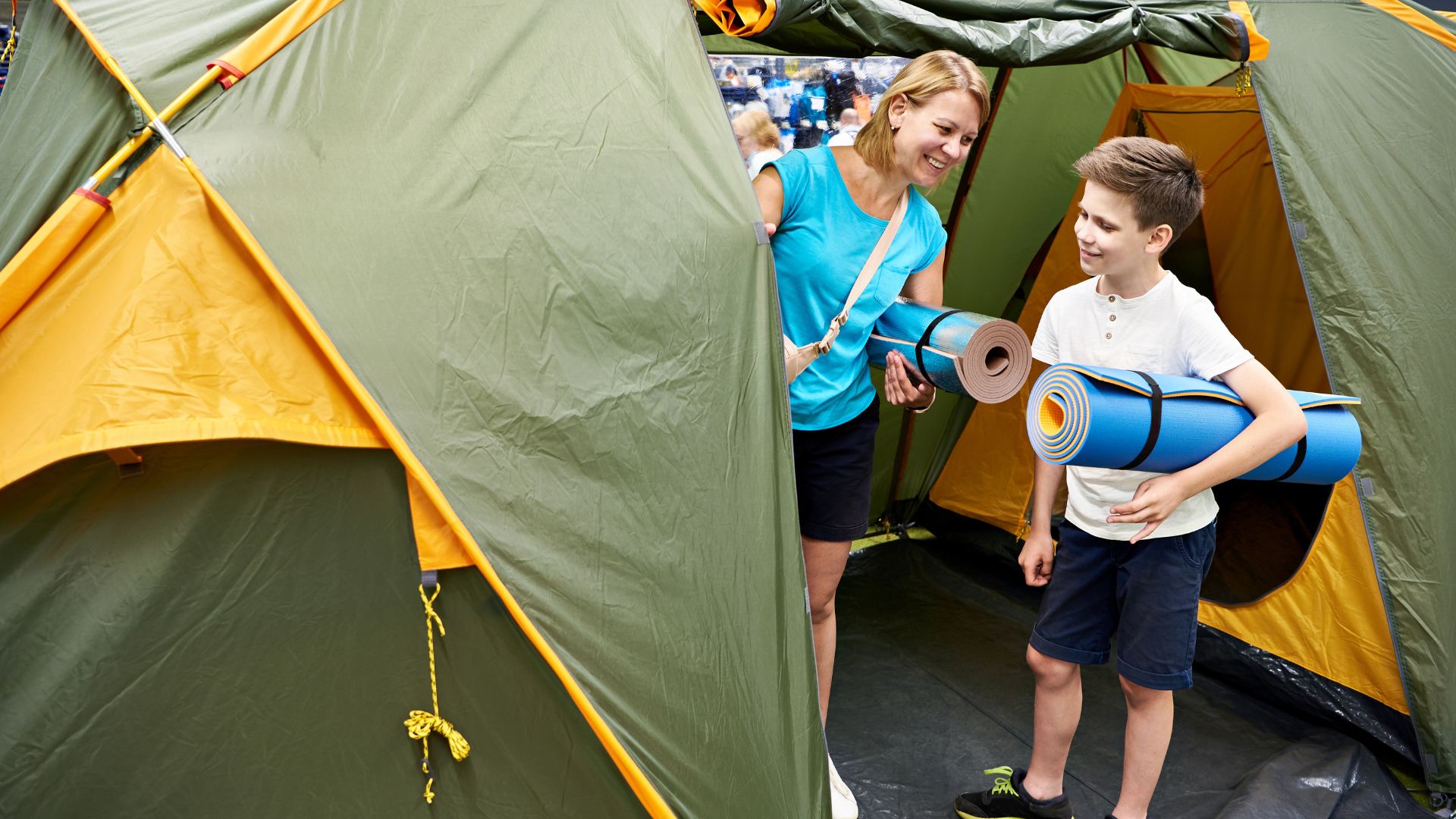Choosing Camping Tents For Sale


No matter your level of camping experience, there are camping tents on sale that can meet your needs. When selecting one for sale, ensure it can comfortably hold as many people as it claims (refer to our How to Size a Tent guide for help)
Premium options feature enhanced livability features like multiple doors and vestibules – storage areas located just in front of tent doors that protect gear from rain – along with thicker fabrics and full coverage rainfly designs to withstand wet conditions.
Size
Size should always be taken into consideration when selecting a tent, to ensure it will accommodate all members of your family comfortably. Also important is its shape: for optimal headspace and movement space a more rounded geodesic or dome tent would provide more benefits than an A-frame style tent.
Many tent manufacturers overestimate how many people can fit comfortably inside, so it is advisable to add one or two people to the capacity rating in order to provide more room to move and sleep comfortably in your tent.
Canopy tent weight bags offer a convenient and hassle-free solution to securing your canopy tent with minimal trip hazards. Lightweight when empty and easily fillable on-site with sand or other materials, they can be used alone or combined with other weights for additional stability – with options to match any tent’s aesthetic!
Weight
Weight of the Tent: Another Key Consideration While considering how many people will fit comfortably inside, its weight should also be taken into account. Utilizing lightweight materials like aluminum poles may reduce weight without compromising design; additional features like seam sealing and waterproof fabrics may further decrease overall tent weight.
An effective approach for selecting an appropriate tent size is aiming for 20 square feet per person in terms of floor space, which should give every individual enough room to sleep and store gear comfortably.
Consideration of the minimum weight is also helpful when selecting tents for backpacking trips, as this gives a more accurate representation of a tent’s true weight. It refers to the minimum gear necessary to set up the tent – including its body, rainfly and tent poles – while leaving out stuff sacks, guy cords or footprints (unless explicitly listed as included in minimum weight). This gives an accurate representation of its true weight.
Ventilation
When shopping for tents, opt for options with ample mesh use combined with built-in vents to keep your space cool during hot weather. Budget designs like Coleman Skydome and Sundome may have limited venting options and air circulation options that lead to muggy conditions and condensation overnight.
Checking a tent’s floor size to gauge how much room there will be inside is important, as are any vestibules or sitting spaces available for gear or sitting arrangements. Also note any recommended person capacities which often provide an estimate based on how many standard sleeping pads fit arm-in-arm in its confines.
Attention should be paid to denier specifications of fabrics as higher numbers indicate thicker and more rugged materials. The REI Co-op Skyward and Wonderland both boast 150D polyester floors which can withstand plenty of abuse from children or parents, while you’ll find heavy duty canvas options like those found in Big Agnes Bunk House 6 and Nemo Aurora Highrise 6. While not as lightweight as nylon or polyester fabrics, canvas holds up well under repeated use without becoming bulky for backpacking trips.
Ease of Setup
Budget tents may work just fine if you’re new to camping or intend to take things easy; however, for rough weather or repeated use year after season, a premium design would be preferable. These models typically offer sturdy aluminum poles, thicker floor and rainfly fabrics and additional features like vestibules for gear storage.
Tents for camping should be easy to set up if you follow manufacturer recommendations; however, larger tents may require more effort.
To erect a tent, first unfold and push together its poles into a U-shape. Thread each end through fabric ‘Xs’ on your tent top before attaching each to stakes at corners of your campsite. Guylines should then be staked down to keep it taut against winds – extra stakes, burlier guylines and mallets may also come in handy for quick erection!
